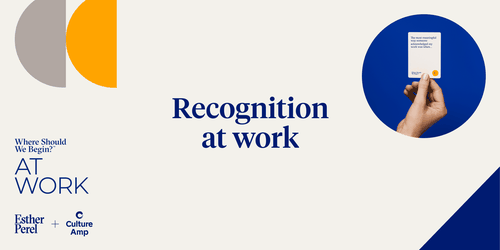
Beyond diversity statements: The role of values exploration

Written by
Matthew Griffith, Ph.D., Miranda Stratton, Ph.D., and Shaila Kotadia, Ph.D.
Stanford School of Medicine Staff JEDI (Justice, Equity, Diversity, and Inclusion) Team
Organizational statements are meant to act as a guiding light for the organization, providing purpose, understanding, and direction. Common types include mission statements – which define what an organization is there to do – and vision statements – which describe the desired future state of an organization.
Recently, many organizations have added diversity, equity, and inclusion (DEI) statements to the mix to better express their commitment to DEI. At the same time, organizations are navigating a political climate that views DEI as increasingly divisive. As organizations continue to persist and push for DEI in this difficult landscape, it is important to ask: Are these statements truly encouraging teams to reflect on how DEI is practiced and valued in their organization? Or are they simply empty words on a page?
In this article, we describe how organizations and teams can leverage and center values-driven exercises and approaches to better and more thoughtfully consider their commitment to DEI. We will also share the approach taken by the Justice, Equity, Diversity, and Inclusion (JEDI) team at Stanford School of Medicine Human Resources Group in developing and integrating team values into the workplace. This approach can be applied locally within teams or broadly across the organization.
But first, why values?
Before we talk about the process, let’s establish why values are the right approach to exploring and articulating a DEI commitment.
First and foremost, values are a great fit for understanding DEI commitment, as they can help clarify how the organization puts words and ideas into action and the underlying principles that guide their decisions.
Values are not just about establishing the what behind DEI – they create the space for teams to explore and identify the why. Connecting values to a DEI commitment encourages teams to consider what that commitment looks like, and, more importantly, why that commitment matters to the team and organization. The purpose of values exploration exercises is less about identifying the value itself and more about the reflection, motivation, and clarity it can evoke.
How to leverage values exploration to interrogate organizational DEI commitment and action
Values exploration is a process through which individuals reflect on, give meaning to, and clarify their values. This process is critical as it helps people understand what they value while also challenging them to consider who they want to be. Exploring their values makes people more conscious about how they show up and live. The exploration can take many forms, ranging from facilitated small group discussions to a series of individual reflection prompts. Often, multiple modalities are used to reflect and engage.
Values exploration is fundamentally about moving from what we say our values are to a critical reflection on and engagement with how we live our values. This reflection and engagement can inspire transparency, dialogue, and action.
Below, we share how you can utilize values exploration to foster organizational and team commitment to DEI and drive deep organizational impact.
1. Start by exploring individual values
Before identifying organizational values, start conversations around the values individuals hold. Your organization is made up of individuals, and starting with self-reflection allows people to see themselves in the process.
Begin conversations about individual values through a values exploration exercise, such as the Dare to Lead List of Values from Brené Brown. Typically, in this exercise and others like it, participants are encouraged to select the values that resonate most deeply with them and explore various reflection questions.
In addition to asking team members to complete the exercises, give them ample time for reflection. Allocate time during a team meeting to complete, share, and debrief on the values exploration exercise. Afterward, find ways to extend the conversation; for example, create a Wordcloud (or other visual representation) to display everyone’s values and make it visible in your shared spaces. Encourage team members to record and regularly revisit their individual values as a way to ground, motivate, and center themselves.
2. Transition from individual to team
Now that team members have reflected on their individual values, the next step is to explore values from a team perspective. Start by revisiting the individual values of each member of the group. Then, have the team reflect on similarities and differences, and identify themes from the values collected.
Invite team members to ask themselves the following questions:
- At a team level, what common themes appear across values?
- How might these values and themes inspire the team to further enact the organization’s mission and vision?
- How are these values and themes embodied (both individually and collectively)?
From there, engage teams in facilitated discussions to consolidate and solidify the team values. This process is iterative, so expect to revisit the topic over multiple conversations. These conversations can be difficult and personal, so having a seasoned facilitator to manage this process is the key to success.
3. Interrogate the connection between your team values and your commitment to DEI
Now that you and your team have explored and identified both individual and team values, the real work begins. Consider the team’s values through a DEI lens. For example, does everyone have the same experience with the purported values? Or, what happens when a value is not upheld in your community? From a DEI professional’s perspective, the first question that pops into mind is probably: What is the connection between these values and the commitment to diversity, equity, and inclusion?
There are many ways to interrogate team values and the connection to DEI. One example is Brené Brown’s “rumble” exercise, where team members discuss the behaviors and accountability needed to uphold each value.
No matter how you choose to facilitate such conversations, there is one question that must be explored: How is DEI practiced as part of this value? Be specific: What are the behaviors, practices, etc., that actively illustrate the organization’s commitment to DEI in this value? After this discussion, teams, and organizations can demonstrate their commitment to DEI by addressing those gaps directly or by redefining their values in a way that better articulates their commitment.
Drive genuine DEI commitment
Diversity statements can be an essential signal of allyship and action – but only if an organization’s efforts extend beyond simply creating the statement. While many of these statements seek to center DEI as a central part of their organizational identity, statements are more powerful when used in combination with values exploration to better understand and articulate the organization’s connection and commitment to DEI.
As you go through this exercise, keep in mind that the question is less about “who you are” as an organization or team but rather “what you value.” Centering a group’s values creates organizational clarity and intention. Give it a try as a way to go beyond DEI statements and put your organization’s DEI commitments into action.
For additional information, see the Stanford School of Medicine Staff JEDI Collective Resources Guides.

Build a diverse, equitable, & inclusive workplace
This piece was authored by Matthew Griffith, Ph.D., Miranda Stratton, Ph.D., Shaila Kotadia, Ph.D., and Morgan Diamond from the Stanford School of Medicine Staff JEDI (Justice, Equity, Diversity, and Inclusion) Team. For more information about the team, visit the Stanford Medicine Staff JEDI page.



